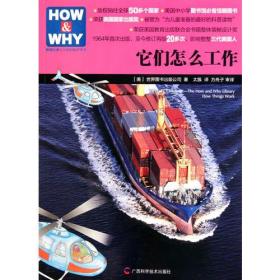
Clintonomics: How Bill Clinton Reengineered the Reagan Revolution (英文版)
没拆塑封
¥ 15 八五品
仅1件
作者Jack Godwin、Jack Goodwin 著
出版社Mcgraw-Hill
出版时间2009-03
装帧精装
货号14-2-5
上书时间2024-11-28
- 在售商品 暂无
- 平均发货时间 11小时
- 好评率 暂无
- 最新上架
商品详情
- 品相描述:八五品
- 谢绝恶意下单购买!!!本店所售图书均为二手正版书籍,不会刻意隐藏书的瑕疵,品样自鉴都是实物书影拍摄。仔细检查为正版书(也有个别实在分辨不清的情况,请先沟通,谢谢理解和支持!)整体内容页 (目录页以后)无勾画笔记和水渍印,也无缺页松页脱胶的现象,另不排除有遗漏的瑕疵,呈自然旧。没描述到的可仔细结合实物书影参考,请慎重下单,免争议。作为二手书籍特殊商品:要有心理准备,在一般情况下,书都会或多或少有点各种瑕疵,重点处会作书影展示或品样描述,还有就是新版几乎没有锈(黄)斑和内容页纸张边口泛黄现象(个别除外),老版书几乎是有锈(黄)斑,还有陈旧味道和个别存在纸张泛黄现象的,对品样要求高的书友,下单前可详细咨询,签收后谢绝不友好的言论,非诚勿扰。另外,书是属于可复制性的商品,在正常情况下,售出的货物不支持无理由退货退款,介意勿拍。
图书标准信息
- 作者 Jack Godwin、Jack Goodwin 著
- 出版社 Mcgraw-Hill
- 出版时间 2009-03
- ISBN 9780814413982
- 定价 298.70元
- 装帧 精装
- 页数 304页
- 正文语种 英语
- 【内容简介】
-
With a presidency marked by rancorous, sometimes crippling bipartisanship that twice brought Congress to a standstill, Bill Clinton elicited strong feelings in friends and foes alike. But often overlooked amid the heightened emotions was the fact that Clinton’s ideas and policies uniquely bridged the chasm between left and right to form a new worldview supporting fiscal responsibility, global connectivity, and ethnic diversity.
Clintonomics is the first book to go beyond the colorful biographical details to thoughtfully and meticulously analyze the powerful blend of liberal/conservative thinking that defined Clinton’s presidency—and preserve his legacy. By merging the best ideas from both the left and the right, Clinton was able to accomplish what his Republican predecessors had not: balancing the budget, reducing federal bureaucracy, reforming the economy, and positioning the country to compete in a global economy, while avoiding the cynical “government is the problem” attitude of the conservative movement. He even achieved pet GOP goals, such as reforming welfare and reducing government regulation, while still actively ensuring a level playing field and empowering all citizens to fulfill their potential.
Packed with original research and steeped in a rich historical perspective, this insightful book explores how Clinton’s presidency marked the return of fiscal discipline and the end of big government, and thus served as a logical corollary to the Reagan Revolution. It traces the evolution of Clinton’s political thinking and governing philosophy from his years as governor of Arkansas to his eight-year tenure as U.S. President, including chapters that:
? Set the stage by outlining the ideas of the major political economists of the past centuries, from Adam Smith’s “invisible hand” to Friedrich Hayek’s ideas on limited government to John Kenneth Galbraith’s writings on the social balance.
? Review the legacy of the Reagan years, with its emphasis on lower taxes, reduced spend-ing for social services, minimal government regulation of the economy, and major increases in military spending—all of which built a false prosperity on a mountain of debt.
? Examine Clinton’s “Third-Way” principles, including pro-growth economic policy that fosters close ties to the private sector; a balanced budget with a smaller, less bureaucratic federal government; and reduction of economic inequality through investments in education and technology.
? Look at specific ways that Clinton set out to solve looming challenges, including healthcare, immigration, welfare, trade, and education—challenges that continue to demand our attention and national will to resolve.
Clinton transcended the simplistic idea that liberals want to expand government and conservatives want to starve it to death. His “Third Way” is a political hybrid of right/left thinking that embraced the complexities and opportunities of a globalized, interlocked world. Clintonomics serves as a blueprint of potentially success-ful strategies for the twenty-first century, and a model for future administrations to study and emulate. - 【作者简介】
- Jack Godwin, Ph.D. (Sacramento, CA) is a political scientist with extensive experience in business and government spanning more than two decades and dozens of countries. He currently serves as Chief International Officer at California State University.
- 【目录】
-
Contents
Acknowledgments xiii
Introduction 1
Part One: Political Economy
1. The Purpose of Politics 15
The Old Dogmas 19
The Stormy Present 28
2. The Philosophical Foundation 32
John Locke: The Labor Theory of Value 34
Jean-Jacques Rousseau: The Social Contract 35
Adam Smith: The Invisible Hand 36
Jeremy Bentham: The Greatest Good 38
David Ricardo: Free Trade 39
Friedrich List: Limits of Free Trade 40
Henry Charles Carey: Benefits of Fair Trade 42
John Stuart Mill: The National Debt 43
Karl Marx: The Capitalist System 44
John Maynard Keynes: Deficit Spending 45
Joseph Schumpeter: Entrepreneurship 48
Friedrich Hayek: Limited Government 50
John Kenneth Galbraith: The Social Balance 52
3. The Reagan Legacy 56
The Genealogy of Reaganomics 61
Public Versus Private Ownership 67
Civil Rights and Social Issues 73
The Conservative Deficit 76
4. The Global System 85
The Laws of Complexity 90
A Web of Mutuality 94
5. Reflections on Change 104
Typology of Change 105
Future Preference 121
Part Two: Public Policy
6. The Role of Government (A) 129
The End of Big Government 134
The New Covenant 145
7. The Role of Government (B) 151
The Third Way 153
The Two Friedmans 159
New Federalism 171
8. Theory of Constraints 181
Budgeting 185
Healthcare 198
Welfare 204
Diversity 208
Education 217
Immigration 224
Trade 230
Defense 240
9. Bridge to the Future 248
Select Bibliography 257
Notes 263
Index 285
相关推荐
-

Clintonomics: How Bill Clinton Reengineered the Reagan Revolution
全新嘉兴
¥ 16.00
-

Clintonomics: How Bill Clinton Reengineered the Reagan Revolution
九品北京
¥ 28.00
-

Clintonomics: How Bill Clinton Reengineered the Reagan Revolution
九品北京
¥ 16.00
-

HOW
全新北京
¥ 5.60
-

HOW
全新北京
¥ 10.10
-

HOW
全新保定
¥ 10.10
-

HOW
全新北京
¥ 10.10
-

How
八五品大理
¥ 150.00
-

HOW
八品白城
¥ 10.00
-

how
九五品重庆
¥ 200.00
— 没有更多了 —























以下为对购买帮助不大的评价